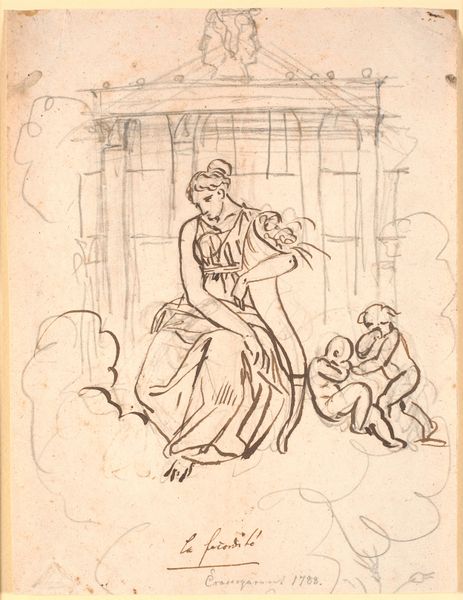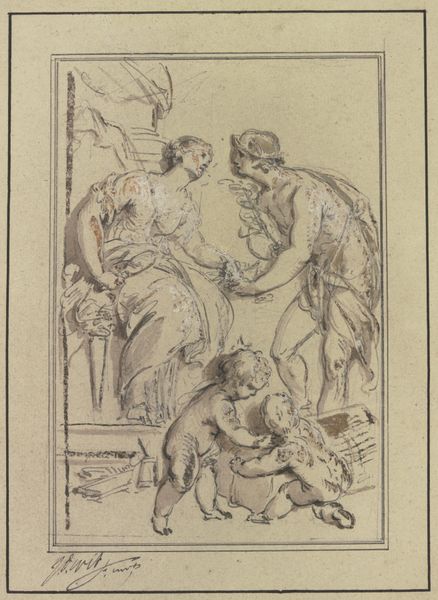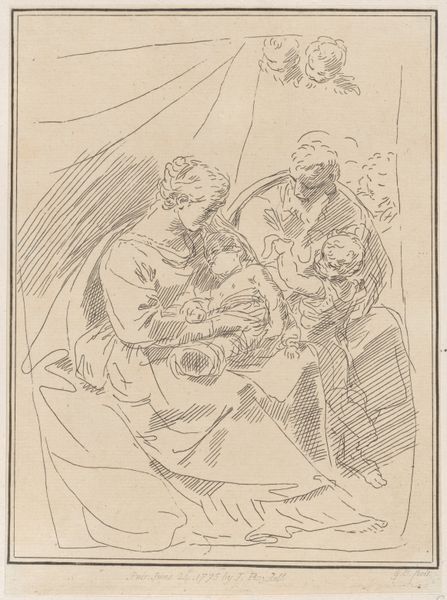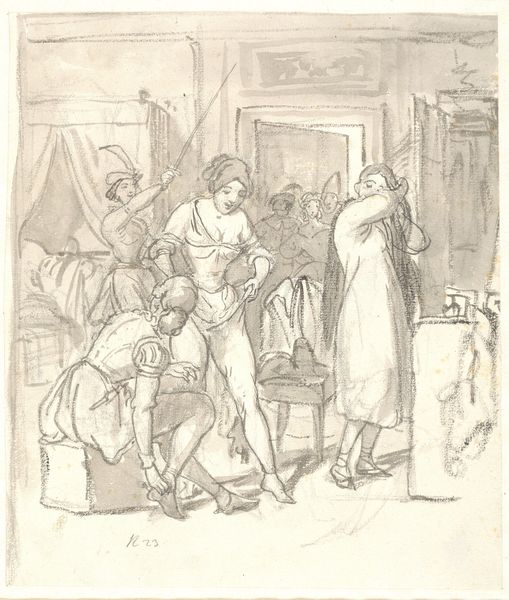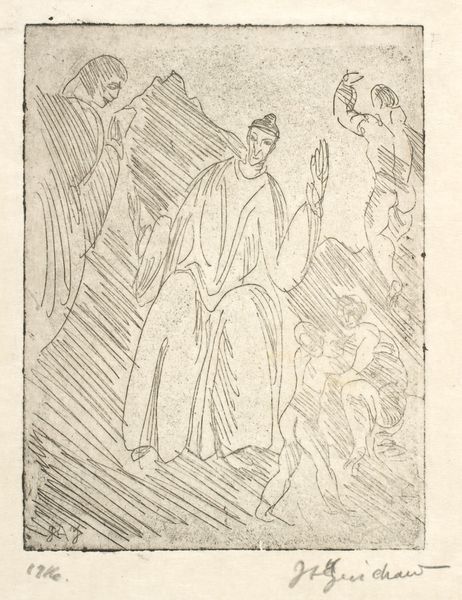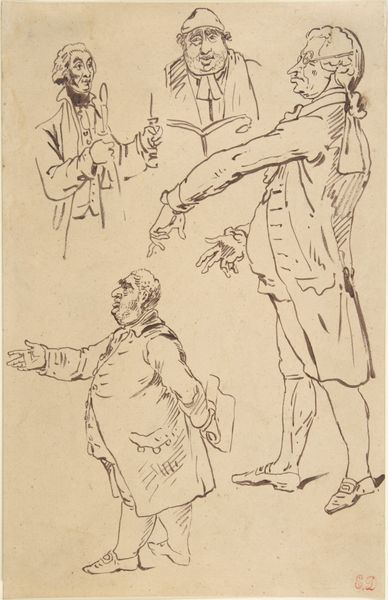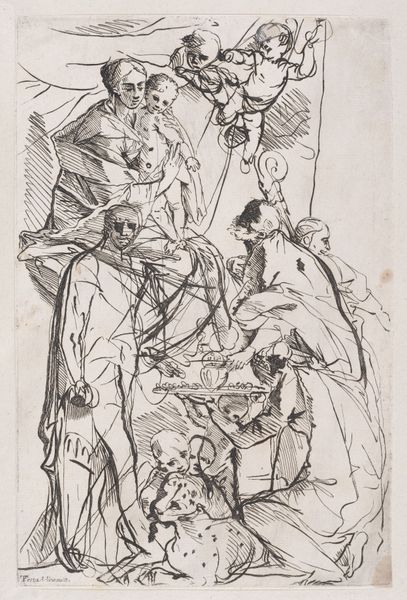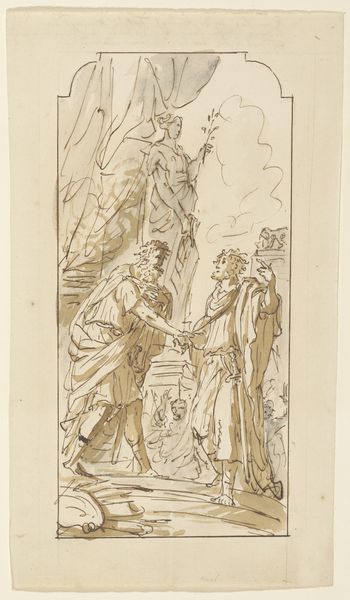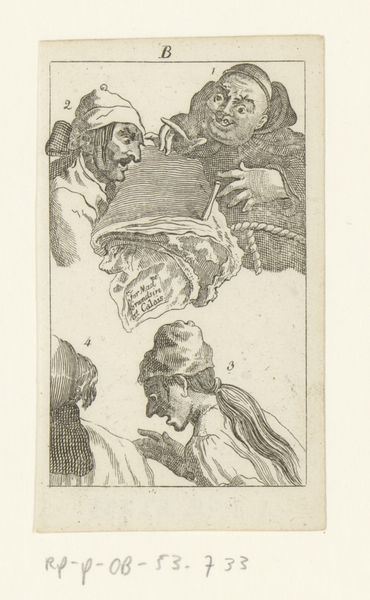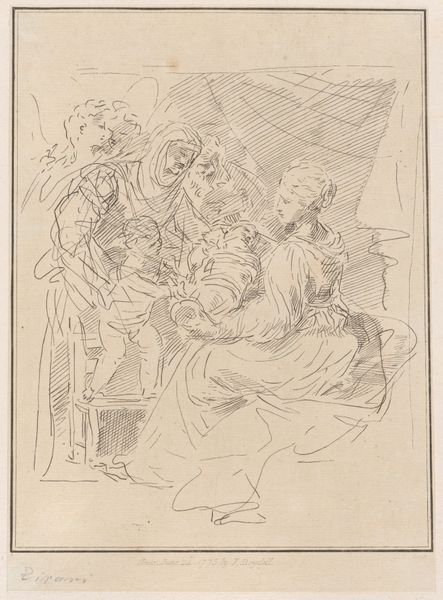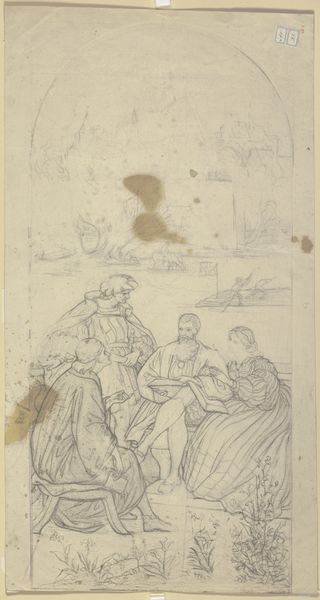
Der Heilige Nikolaus von Bari erweckt drei Knaben vom Tode
0:00
0:00
drawing, ink, pen
#
drawing
#
baroque
#
pen sketch
#
figuration
#
ink
#
pen
#
history-painting
Copyright: Public Domain
Editor: Here we have a pen and ink drawing by Pietro Antonio de' Pietri entitled "Der Heilige Nikolaus von Bari erweckt drei Knaben vom Tode" - "Saint Nicholas of Bari Reviving Three Children." I find it has a rather spontaneous feel with all the quick, thin lines, despite depicting a rather dramatic scene. What’s your interpretation of this piece? Curator: Considering the baroque period’s grand theatricality, this drawing serves as an intriguing study in image politics. Note how Saint Nicholas is positioned centrally, his outstretched hands acting as a conduit between the divine realm above and the children below. Editor: I see, he's visually mediating power. How did that kind of image function in the cultural sphere then? Curator: Remember, baroque art frequently functioned as propaganda. De' Pietri presents the Church, represented by Saint Nicholas, as an active, benevolent force. Observe how the act of resurrection reinforces the Church's perceived power. The visual cues, like the descending light, amplify this narrative of divinely sanctioned authority. Editor: That's a very insightful point about the "propaganda." Were these images explicitly commissioned with such a purpose? Curator: Often, yes, explicitly or implicitly. Patrons, whether the Church or wealthy individuals, used art to reinforce their positions. Think about the function of spectacle and emotion during the baroque period and how this image participates in those tendencies. It stirs awe. Editor: So it's about instilling faith and securing the Church's social role through emotional visual narratives. It’s definitely more complex than it seems initially! Curator: Precisely. Analyzing these elements sheds light on the complex relationship between art, power, and belief in 17th-century Europe. Editor: I never considered drawings in terms of power dynamics, focusing more on the art aspects. Now, I can see the importance of historical context.
Comments
No comments
Be the first to comment and join the conversation on the ultimate creative platform.
